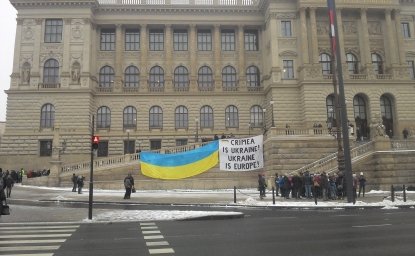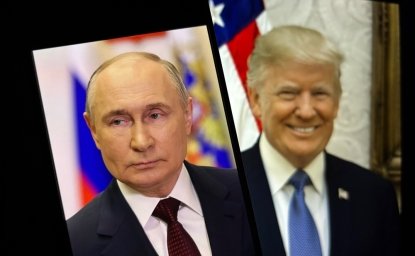North Ossetia's Geopolitical Entanglements

"The traditional study of geopolitics has long been antithetical to the study of local places on their own terms," stated Gerard Toal, professor and director, Government and International Affairs Program, Virginia Polytechnic and State University, at a 6 October 2008 lecture on North Ossetia at the Kennan Institute. Recognizing the limits of traditional geopolitical discourse, Toal first gave a brief assessment of Ossetian history, national awareness, and identity and then demonstrated their importance in understanding what he defined to be North Ossetia's three greatest geopolitical entanglements: its conflict with Ingushetia over Prigorodnyi, its involvement in the Chechen War, and its connection to South Ossetia.
Citing the findings of his survey-based research, Toal noted how distinctive Ossetians proved to be from other groups in the northern Caucasus. While North Ossetia's population of just over half a million is relatively small, it is internally diverse. Toal's research pointed out that although Ossetians possess the strongest sense of ethnic pride of all groups surveyed, they are actually "well-disposed to build cross-ethnic relations and generally reject an exclusively ethnic identity." According to Toal, the other important particularity informing Ossetian identity is that its very formation "was incubated by the imperial structures and practices of the Russian and Soviet Empires." Toal noted that Ossetians were the most successfully russified and later sovietized of the Caucasian peoples. "This long history of identification with and service to the central state has brought Ossetians many rewards," Toal stated, "but it has also entangled them in geopolitical conflicts to the east, the south, and beyond."
One such entanglement takes the form of North Ossetia's territorial dispute with its neighboring republic of Ingushetia over eastern Prigorodnyi, part of the raion surrounding Vladikavkaz. Toal pointed out that the first incident of ethnic violence in post-Soviet Russia was not in Chechnya, but in Prigorodnyi in late October and early November 1992, when more than 500 people were killed and more than 30,000, primarily Ingush, were displaced from their homes. Toal described the role that political geography played in creating the dispute, explaining that Vladikavkaz had been the shared capital of the Ingush and the Ossetians until the 1930s, when it was given by the central state exclusively to the Ossetians, despite the fact that its eastern suburbs were predominantly inhabited by Ingush. When the Ingush were deported en masse along with the Chechens in 1944, Ossetians, particularly from South Ossetia, were moved into Prigorodnyi by Stalin. As restrictions on population movements were lifted in the late 1950s and Ingush returned to Prigorodnyi and agitated for property restoration, directives from above and material conditions on the ground quickly materialized at the local level into a territorial dispute that still exists today.
"If this first situation is one where the central state is now entangled because of local dynamics," Toal pointed out, "then the case of the Ossetians in the Chechen War is one where the central state has drawn in the Ossetians by virtue of their role as local allies of the Russian state." Toal explained how North Ossetia was used as a launching pad for the Russian state's attempts to quell the Chechen conflict. He examined the various meanings with which the 2004 terrorist siege of a North Ossetian elementary school in Beslan has been imbued in order to scrutinize the Ossetian understanding of their entanglement in the conflict. Contrary to the claims made by terrorists themselves that the event was connected to the war in Chechnya, Toal described how "the frame used by the Putin administration immediately externalized and internationalized the attack and likened it to 9/11." The attack created a policy window that was exploited to strengthen federal presidential powers. While the results of Toal's survey suggest that the majority of Ossetians accept the Russian government's official storyline, Toal addressed the local activism of groups like Mothers of Beslan and Voice of Beslan and suggested that their demands for an independent investigation reveal an important fissure in the relationship of some Ossetians to the Kremlin.
Finally, Toal stated that North Ossetia's third entanglement, its connection to South Ossetia, "mixes both local and central state dynamics, with local Ossetian forces fiercely defending their position in adverse circumstances yet also acting as willing instruments of a larger Kremlin agenda." For Toal, the case of South Ossetia illustrates the limits of the modern geopolitical imagination and its assumption of discreet territorial units, clear boundaries, and clear identities. Physical geography, Toal argued, is an interpretive matter, and historical legacies and longstanding networks of connection create a much messier map than traditional geopolitics tends to portray. With such "interpretive matters" in mind, Toal explained how the Kosovo precedent played a crucial role in the conflict that erupted between Georgia and Russia over South Ossetia in August. He recalled Putin's likening of Kosovar independence to "one end of a stick," the other end of which, he warned, "would hit the West on its head." "Putin was true to his word," Toal noted, "and beat the West on the head with its own Kosovo stick – South Ossetia was Russia's Kosovo, with Saakashvili playing the role of Milosevic and Russian Federation troops the role of NATO riding to the rescue."
Toal concluded by noting that understanding the situation of South Ossetia, and the two other complex entanglements reviewed, requires the deconstruction of the prevailing frames, which support self-righteous moralizing in international politics. "In the study of these conflicts there is always a temptation to take sides and engage in moral condemnation," he noted, "and while this is often necessary and appropriate it does have its dangers." As these entanglements illustrate, details do matter, and as Toal argued, challenging downscaled geopolitical storylines and analogies allows one to think critically about the messiness of the world political map.
Author

Kennan Institute
The Kennan Institute is the premier US center for advanced research on Eurasia and the oldest and largest regional program at the Woodrow Wilson International Center for Scholars. The Kennan Institute is committed to improving American understanding of Russia, Ukraine, Central Asia, the South Caucasus, and the surrounding region through research and exchange. Read more

Explore More
Browse Insights & Analysis
The OSCE is a Good Value for America

Infographic | Russia's Illegal Annexation of Crimea

Russia’s Indigenous Communities and the War in Ukraine
